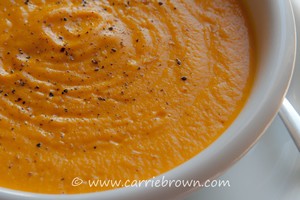Vegetarian Smarter Science of Slim reader Cristina Hanganu-Bresch reversed her diabetes and lost 45lbs. in ~3 months. In this post, Cristina expands on her inspirational smarter success story with some SANE tips for vegetarians and non-vegetarians alike. – Jonathan Bailor
13 Simple Tips for SANE Vegetarian Eating
by Cristina Hanganu-Bresch, http://www.lipomachia.wordpress.com
- Empty your pantry of starches and sugars immediately. There’s no way around it. Better do it now before you lose your resolve. Your skinny friends or neighbors can have your surplus.
- Be ready to cook. You can’t go SANE and be a vegetarian without expecting to prepare some meals. Invest in some good vegetarian and vegan cookbooks—you’ll need several since you need to eliminate any recipes that require dough, rice, sugar, dairy, etc. (which is A LOT!).
- Make sure you only get UNSWEETEENED veggie milks (this is an easy mistake to make) – and use Splenda if you need to sweeten the deal. I replaced my unsweetened soymilk (80 cals/cup) with unsweetened almond milk (35-40 cals/cup) or unsweetened flaxseed milk (25 cals/cup, lots of Omega 3).
- Have a collection of good vegetable oils to cook with. I typically have at least 4-5 types on hand: a good organic canola oil (rich in Omega 3, unlike olive oil) for regular sautéing; a good (expensive, but worth it!) olive oil to drizzle over salads; a bottle of sesame oil (excellent in Asian-inspired dishes); a good truffle oil (olive oil infused with truffles, great for a finishing touch); and some oil sprays (like Pam, preferably the organic canola or olive oil sprays) – keeps your calories in check at times, easier to deal with in certain dishes or recipes. Have some good vinegars around, as well – but go easy on the balsamic or just eliminate it altogether.
- Have a good collection of spices to work with—flavored salts (I love, love LOVE flavored salts, especially smoked sea salt, which I use all the time), peppers (cayenne, red, black, etc.), and herbs, dried or not. I keep a small herb garden on my kitchen windowsill—basil, parsley, oregano, rosemary, nothing spectacular, but very useful in a pinch.
- Keep your refrigerator stocked with good dips: baba ghanoush (try a lighter version); hummus (there are some hummuses lower in calories – figure out which ones you like, or make your own); harissa (very spicy, excellent Middle-Eastern pepper dip); guacamole (buy a good, fresh version, like the one sold at Whole Foods—anything heavily processed is lousy; or make your own); tzatziki (which you can make yourself with fat free Greek yogurt, cucumber, and dill); chimichurri; salsa; pesto (especially the vegan pesto—again, you can make this yourself if you have a food processor); etc. Make sure you keep some condiments around as well (soy sauce, lemon and/or lime juice, mustard. Get rid of the ketchup. Too much sugar!).
- Keep some cut veggies around for a quick snack or impromptu meal when you have no time to cook—a bag of baby carrots, celery sticks, pepper strips, broccoli and cauliflower florets, snap peas, cherry tomatoes, you get the idea. You can buy these pre-cut from your grocery store, if you’re short on time. Eat them with any of the previously mentioned dips.
- Keep your pantry stocked with nuts and flaxseed. Buy some of those small plastic snack baggies and weigh 1-oz bags of nuts (mixed or not) ahead of time, perhaps on a weekend, so you can grab them on the fly during the week for a mid-afternoon snack.
- Keep healthy snacks around—I am partial to Brad’s Raw Leafy Kale and I haven’t met a seaweed snack I don’t like.
- Get a cold-brewing tea pitcher and prepare your green tea ahead of time. I make a quart, and when it’s nice and cool, I pour it into a water bottle (BPA free, naturally), and make another. This way I can grab the bottle of cold green tea whenever for quick hydration!
- Keep your pantry supplied with protein powder (whey or soy-based, and flavored is ok—I order mine in 5 or 10-lb bags from Amazon) and cocoa powder, and experiment with things like chia and hemp seeds (milled).
- Consider investing in some kitchen equipment if you haven’t done so already: a food mill (a simple coffee mill will do the job just fine), possibly an herb mill if you like blending herbs, a good blender, a food processor, a kitchen scale, and some non-stick frying and baking dishes.
- Hit the farmers’ markets—learn when and where they are and stock up on fresh veggies and fruits. Even try new things. Why not! Variety is the spice of life.
– Cristina Hanganu-Bresch, http://www.lipomachia.wordpress.com
